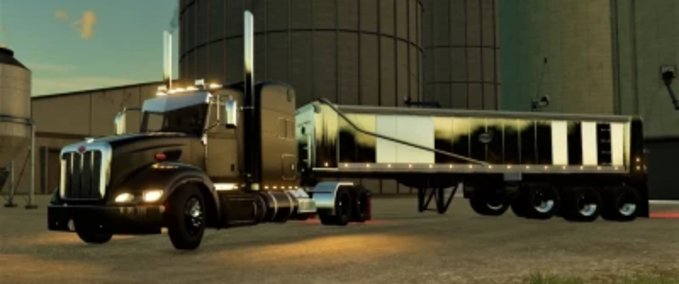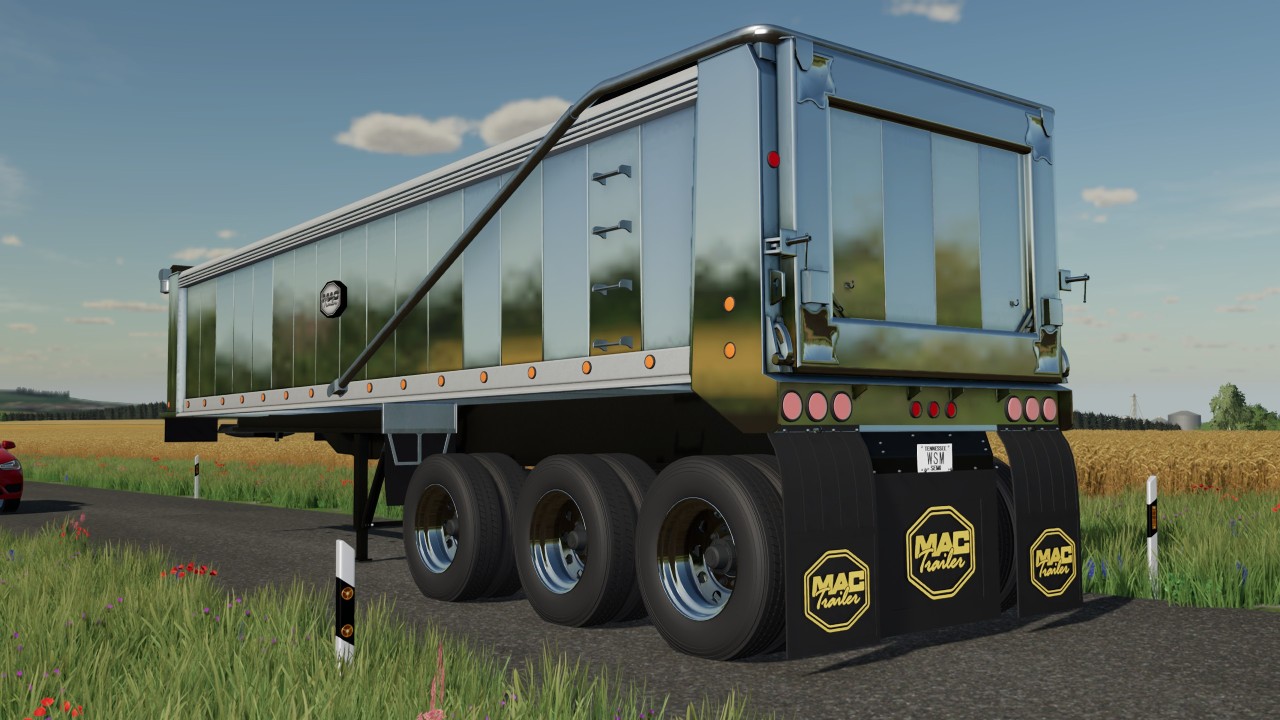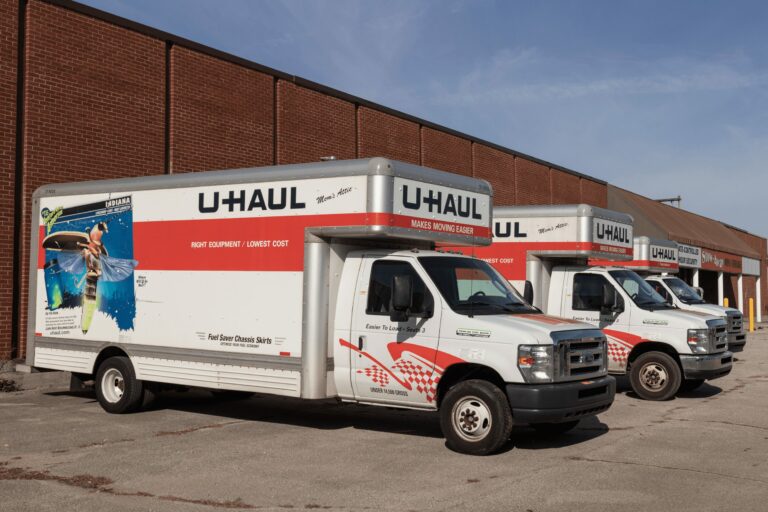Tri Axle Yardage: The Backbone of Bulk Material Transport
Tri Axle Yardage: The Backbone of Bulk Material Transport cars.truckstrend.com
In the dynamic world of construction, landscaping, and aggregate supply, efficient material transport is not just a convenience—it’s a critical determinant of project success, budget adherence, and environmental footprint. At the heart of this efficiency lies a fundamental concept: Tri Axle Yardage. More than just a number, it represents the vital capacity of a tri-axle truck, measured in cubic yards, to move vast quantities of bulk materials. Understanding tri-axle yardage is paramount for anyone involved in planning, executing, or managing projects that require significant material logistics. It’s the key to optimizing hauls, reducing costs, and ensuring timely delivery, making it an indispensable piece of knowledge for industry professionals.
This comprehensive guide will delve deep into the intricacies of tri-axle yardage, exploring its definition, importance, calculation methods, factors influencing capacity, and practical strategies for optimizing its use. Whether you’re a project manager, a contractor, a material supplier, or simply curious about the logistics of heavy hauling, this article will equip you with the knowledge to navigate the world of bulk material transport with greater confidence and efficiency.
Tri Axle Yardage: The Backbone of Bulk Material Transport
What Exactly is Tri Axle Yardage?
At its core, Tri Axle Yardage refers to the volumetric capacity, expressed in cubic yards (cu yds), of a tri-axle truck’s bed or trailer. A tri-axle truck is typically a heavy-duty commercial vehicle distinguished by having three axles at the rear, in addition to the steer axle(s) at the front. This configuration allows for superior weight distribution and, consequently, a significantly higher payload capacity compared to single or tandem axle trucks.
The "yardage" component specifically relates to the cubic yard, a standard unit of volume measurement commonly used for bulk materials like sand, gravel, dirt, mulch, and stone. One cubic yard is equivalent to a cube measuring 3 feet (36 inches) on each side (3′ x 3′ x 3′ = 27 cubic feet).
While the physical dimensions of a tri-axle dump truck bed might suggest a certain cubic yard capacity, the actual usable yardage for a given material is often constrained by weight limits rather than pure volume. For lighter materials like mulch, the truck might fill its bed to capacity. However, for denser materials like gravel or concrete, the truck will reach its legal weight limit long before its bed is physically full. Typical tri-axle dump trucks can carry anywhere from 15 to 25 cubic yards of material, depending on the truck’s specifications, the material’s density, and local road weight restrictions.
Why Tri Axle Yardage Matters: Importance and Benefits
The precise understanding and utilization of tri-axle yardage offers a multitude of benefits that directly impact the efficiency, cost-effectiveness, and overall success of projects:

- Optimized Logistics & Efficiency: Knowing the exact yardage a tri-axle truck can carry allows for precise planning of material delivery and removal. This translates to fewer trips needed to transport a given volume of material, significantly reducing travel time, labor hours, and operational delays.
- Cost Savings: Fewer trips mean reduced fuel consumption, lower driver wages per unit of material, and less wear and tear on vehicles. This directly contributes to lower overall project costs, making tri-axle trucks a highly economical choice for large-scale hauling.
- Accurate Budgeting & Quoting: With a clear grasp of tri-axle capacity, contractors and suppliers can provide more accurate quotes for material delivery and removal services. This eliminates guesswork and helps in creating realistic project budgets, avoiding unexpected overruns.
- Enhanced Project Scheduling: Reliable material delivery schedules, based on accurate yardage calculations, ensure that materials arrive precisely when needed, preventing downtime for crews and equipment. This keeps projects on track and within their timelines.
- Regulatory Compliance & Safety: Understanding weight limits in relation to yardage is crucial for avoiding overloading, which can result in hefty fines, vehicle damage, and severe safety hazards. Proper loading within legal limits ensures compliance with transportation regulations and promotes road safety.
- Environmental Benefits: By maximizing the payload per trip, tri-axle trucks contribute to a reduced carbon footprint. Fewer vehicles on the road mean less traffic congestion and lower overall emissions per cubic yard of material transported.

Calculating Tri Axle Yardage: A Practical Guide

While the stated capacity of a tri-axle truck is a good starting point, calculating the actual usable yardage requires considering both the physical dimensions of the truck bed and, critically, the density of the material being hauled.
1. Measuring the Truck Bed (Volumetric Capacity):
The simplest calculation for a rectangular truck bed is:
- Volume (Cubic Feet) = Length (ft) x Width (ft) x Height (ft)
- Volume (Cubic Yards) = Volume (Cubic Feet) / 27 (since 1 cubic yard = 27 cubic feet)
Example:
A typical tri-axle dump truck bed might be 20 feet long, 8 feet wide, and 4 feet high.
- Volume in cubic feet = 20 ft x 8 ft x 4 ft = 640 cubic feet
- Volume in cubic yards = 640 cubic feet / 27 = 23.7 cubic yards
This calculation gives you the maximum potential volume if the material had no weight.
2. Accounting for Material Density and Weight Limits (The Real-World Factor):
This is where the true "usable" yardage comes into play. Every bulk material has a different density (weight per unit of volume). Trucks also have a Gross Vehicle Weight Rating (GVWR) and specific axle weight limits.
- Gross Vehicle Weight Rating (GVWR): The maximum permissible total weight of the vehicle and its load.
- Tare Weight (Curb Weight): The empty weight of the truck.
- Payload Capacity (Weight) = GVWR – Tare Weight
Example (Continued):
Let’s say our tri-axle truck has a tare weight of 30,000 lbs and a legal GVWR of 75,000 lbs.
- Payload Capacity = 75,000 lbs – 30,000 lbs = 45,000 lbs
Now, let’s consider the material.
- Dry Sand/Gravel: Approximately 2,700 – 3,000 lbs per cubic yard.
- Topsoil (Dry): Approximately 2,000 – 2,200 lbs per cubic yard.
- Mulch: Approximately 500 – 800 lbs per cubic yard.
Calculating Usable Yardage based on Weight:
- Usable Yardage = Payload Capacity (lbs) / Material Density (lbs/cu yd)
Scenario A: Hauling Gravel (Dense Material)
- Material Density = 3,000 lbs/cu yd
- Usable Yardage = 45,000 lbs / 3,000 lbs/cu yd = 15 cubic yards
- Observation: Even though the truck bed can hold 23.7 cu yds, it will hit its weight limit with only 15 cu yds of gravel.
Scenario B: Hauling Mulch (Light Material)
- Material Density = 600 lbs/cu yd
- Usable Yardage = 45,000 lbs / 600 lbs/cu yd = 75 cubic yards
- Observation: This is far more than the truck’s volumetric capacity (23.7 cu yds). In this case, the truck will be volume-limited, meaning it will fill up its bed completely and still be well under its weight limit.
Key Takeaway: For dense materials, weight limits dictate the usable yardage. For light materials, the physical volume of the truck bed dictates the usable yardage. Always consider both.
Types of Materials and Their Impact on Tri Axle Yardage
The type of material being transported is the most significant factor influencing the actual tri-axle yardage per load.
-
Heavy Materials (Weight-Limited):
- Examples: Sand, gravel, crushed stone, asphalt, concrete debris, certain types of fill dirt.
- Impact: These materials are very dense. A tri-axle truck will typically reach its legal weight limit with 15-20 cubic yards, leaving significant empty space in the bed. Overloading is a common risk if operators focus only on filling the bed.
- Practical Advice: Focus on weight scales. Utilize onboard scales or public weigh stations to ensure compliance.
-
Medium Materials (Balance of Weight & Volume):
- Examples: Topsoil, general fill dirt, some lighter aggregates.
- Impact: These materials often allow the truck to get close to, or even fill, its volumetric capacity while remaining within weight limits. Capacities typically range from 18-22 cubic yards.
- Practical Advice: Still monitor weight, but the visual fill level of the bed becomes a more reliable indicator.
-
Light Materials (Volume-Limited):
- Examples: Mulch, wood chips, leaves, compost, light construction debris.
- Impact: These materials are very light. The truck will fill its entire bed, often even "heaping" material above the bed rails, long before it approaches its weight limit. Capacities can reach 20-25+ cubic yards, depending on the truck’s physical bed size and ability to contain the heaped material.
- Practical Advice: Ensure proper tarping to prevent spillage, as the load will often extend above the bed walls.
-
Moisture Content: The presence of water significantly increases the weight of porous materials like sand, dirt, and aggregates. A "dry" cubic yard of material will weigh less than a "wet" one, potentially reducing the number of cubic yards that can be legally hauled per load.
Optimizing Tri Axle Hauling: Actionable Insights
To maximize the benefits of tri-axle yardage and ensure efficient operations, consider these practical tips:
- Know Your Material’s Density: Before loading, always confirm the estimated density of the material, especially if it’s a new type. This allows for accurate load planning.
- Utilize Onboard Scales: Many modern tri-axle trucks are equipped with onboard weighing systems. These are invaluable for ensuring loads are within legal limits and optimizing every trip. If not available, use public weigh stations.
- Proper Load Distribution: Distribute the material evenly across the truck bed to ensure weight is balanced across all axles. Uneven loads can lead to axle overloads, instability, and premature tire/suspension wear.
- Strategic Route Planning: Plan routes that minimize travel time, avoid congested areas, and account for road restrictions (e.g., bridge weight limits). GPS systems optimized for commercial vehicles can be highly beneficial.
- Regular Vehicle Maintenance: A well-maintained fleet is an efficient fleet. Regular inspections and preventative maintenance of tires, brakes, suspension, and engine components prevent costly breakdowns and ensure optimal fuel efficiency.
- Driver Training & Communication: Ensure drivers are well-trained in safe loading practices, understanding weight limits, and efficient driving techniques. Clear communication between drivers, dispatch, and site managers is crucial for smooth operations.
- Consider Transfer Trailers: For even larger volumes of lighter materials, a tri-axle tractor pulling a "transfer trailer" (or "super dump") can carry significantly more yardage (up to 40+ cubic yards) by distributing weight over more axles.
- Negotiate Smartly: When contracting hauling services, understand whether pricing is per cubic yard, per ton, or per load, and ensure it aligns with the material’s characteristics.
Challenges and Solutions in Tri Axle Haulage
Despite their advantages, tri-axle operations come with their own set of challenges:
-
Challenge: Overloading:
- Issue: The most common and dangerous issue, leading to fines, vehicle damage, reduced braking performance, and increased accident risk.
- Solution: Strict adherence to weight limits, use of onboard scales, comprehensive driver training on proper loading techniques, and regular checks at weigh stations.
-
Challenge: Site Access & Maneuverability:
- Issue: Tri-axle trucks are large and heavy, making access to tight construction sites, residential areas, or soft ground difficult.
- Solution: Thorough site assessment prior to delivery, pre-planning drop-off locations, using smaller delivery vehicles for the "last mile" if necessary, and ensuring adequate ground stabilization.
-
Challenge: Material Spillage:
- Issue: Overfilled or untarped loads can spill material onto roads, creating hazards for other drivers, leading to fines, and causing environmental contamination.
- Solution: Never overfill, always use tarps or covers to secure loads, and ensure the truck bed is clean of residual material before leaving the site.
-
Challenge: Wear and Tear & Maintenance Costs:
- Issue: Constant heavy hauling puts immense stress on vehicle components, leading to higher maintenance frequency and costs.
- Solution: Implement a rigorous preventative maintenance schedule, invest in quality parts, and ensure drivers operate vehicles responsibly to minimize unnecessary strain.
Estimated Costs for Tri-Axle Haulage Services (Per Yard/Load)
It’s crucial to understand that "Tri Axle Yardage" itself does not have a price. Rather, it is the service of hauling materials by the cubic yard or per load using a tri-axle truck that carries a cost. Prices vary significantly based on numerous factors including location, material type, haul distance, fuel costs, and the specific hauling company. The table below provides estimated ranges for common tri-axle hauling services.
| Service Type (Material) | Unit of Measurement | Estimated Price Range (USD) | Notes / Considerations |
|---|---|---|---|
| Common Bulk Materials | |||
| Sand, Gravel, Crushed Stone | Per Cubic Yard | $8 – $25 | Varies significantly by distance, specific aggregate type, and supplier. |
| Per Full Load | $250 – $600 | Typical full load (15-20 cu yds), assumes local haul (within 20-30 miles). | |
| Topsoil, Fill Dirt, Clay | Per Cubic Yard | $10 – $30 | Can be slightly higher due to material handling or specific sourcing. |
| Per Full Load | $300 – $700 | For standard tri-axle capacity, often includes basic material type. | |
| Mulch, Wood Chips, Light Debris | Per Cubic Yard | $12 – $35 | Volume-limited materials, often higher per yard due to lower weight per volume. |
| Per Full Load | $350 – $800 | Maximizes truck’s volumetric capacity; less weight sensitive. | |
| Concrete/Asphalt Demolition | Per Cubic Yard | $15 – $40 | Often includes disposal fees at a recycling or landfill facility. Heaviest materials. |
| Per Full Load | $400 – $900 | Strict weight limits apply, potentially lower actual yardage per load. | |
| General Haulage | |||
| Hourly Rate (Wet Lease) | Per Hour | $100 – $180 | Used for complex jobs, multiple stops, or when significant waiting time is expected. |
| Potential Additional Charges | |||
| Fuel Surcharge | Per Mile / % | Varies (5-25% of total) | Common due to fluctuating fuel prices; applied as a per-mile or percentage add-on. |
| Distance Surcharge | Per Mile (beyond X) | $2 – $5 | For hauls exceeding a standard radius (e.g., 20-30 miles from origin). |
| Demurrage/Waiting Time | Per Hour | $75 – $150 | Charged if the truck is delayed at pick-up or drop-off site beyond an allotted time. |
| Minimum Load Fee | Per Load | $250 – $500 | Applies if the quantity needed is less than a full truckload, ensuring profitability. |
Disclaimer: These figures are estimates and can vary widely based on your geographic location, current market conditions, specific material characteristics, and the policies of individual hauling companies. Always request detailed quotes from multiple providers.
Frequently Asked Questions (FAQ) about Tri Axle Yardage
Q1: What is the typical capacity of a tri-axle dump truck in cubic yards?
A1: While physical bed size might suggest 20-25 cubic yards, the actual usable capacity depends heavily on the material’s density and legal weight limits. For dense materials like gravel, it’s often 15-20 cubic yards. For lighter materials like mulch, it can be 20-25+ cubic yards, filling the bed to its volumetric maximum.
Q2: How do weight limits affect the "yardage" I can haul?
A2: Weight limits are often the primary constraint. For heavy materials (like sand, gravel, concrete), the truck will reach its maximum legal weight before its bed is full, meaning the "yardage" hauled will be less than the truck’s physical volumetric capacity. For lighter materials (like mulch), the truck will reach its volumetric capacity before its weight limit.
Q3: Is it always cheaper to use a tri-axle truck compared to smaller trucks?
A3: For large quantities of bulk material, yes. A tri-axle truck’s higher capacity means fewer trips are required to move the same volume, leading to significant savings on fuel, labor, and time per cubic yard. For very small quantities, a smaller truck might be more cost-effective due to lower minimum charges.
Q4: What’s the difference between a cubic yard and a ton?
A4: A cubic yard is a measure of volume (3 feet x 3 feet x 3 feet). A ton is a measure of weight (2,000 pounds). The relationship between them depends on the material’s density. For example, a cubic yard of sand might weigh 1.5 tons, while a cubic yard of mulch might weigh only 0.25 tons.
Q5: How can I accurately calculate how many loads I need for my project?
A5: First, determine the total volume of material needed in cubic yards. Then, divide that total volume by the actual usable yardage a tri-axle truck can carry for that specific material (considering both volume and weight limits). Always round up to ensure you have enough.
Q6: Are there environmental benefits to using tri-axle trucks?
A6: Yes. By carrying more material per trip, tri-axle trucks reduce the total number of trips required. This translates to lower overall fuel consumption, reduced greenhouse gas emissions, and less road congestion compared to using multiple smaller trucks to move the same volume.
Conclusion
Understanding Tri Axle Yardage is far more than a technicality; it’s a cornerstone of effective bulk material logistics. From precise project planning and budgeting to ensuring safety and maximizing operational efficiency, a thorough grasp of this concept empowers professionals across various industries. By considering the interplay of truck dimensions, material density, and legal weight limits, and by implementing smart hauling practices, businesses can significantly reduce costs, streamline operations, and contribute to a more sustainable and productive environment. As the demand for efficient material transport continues to grow, the strategic utilization of tri-axle yardage will remain an indispensable asset for success.




